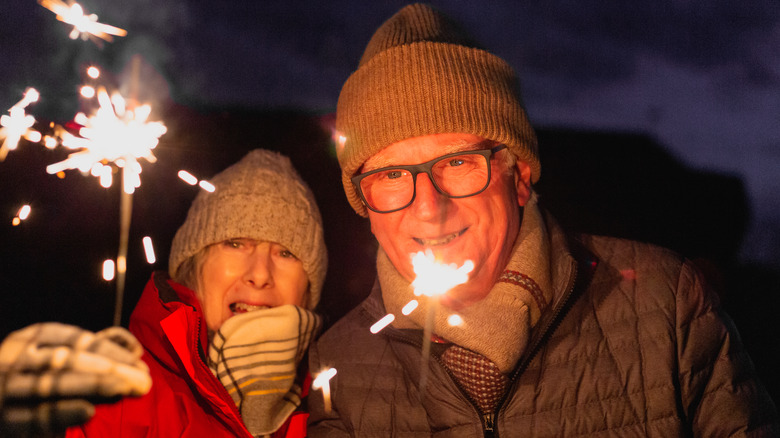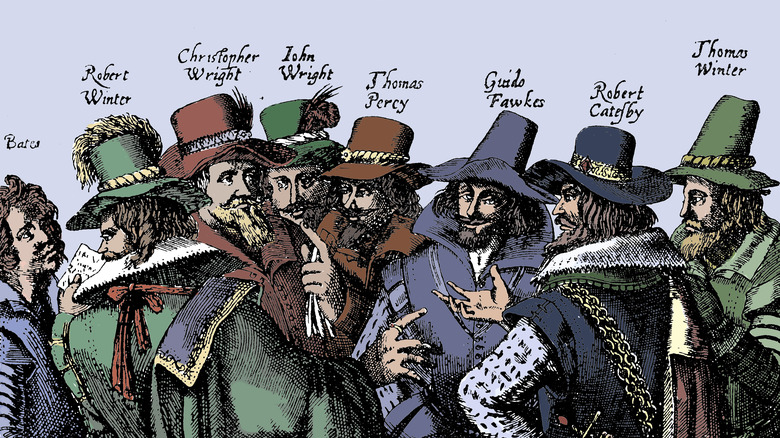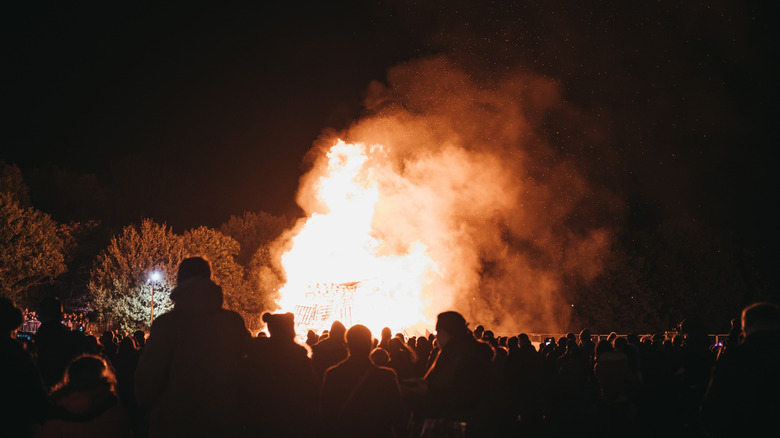Bonfire Night: Your Guide To The Fall Celebration
"Remember, remember, the fifth of November, gunpowder treason and plot; for there is a reason why gunpowder and treason should ne'er be forgot." So goes the traditional rhyme commemorating Bonfire Night, also known as Guy Fawkes Night, which is celebrated throughout the U.K. each year on November 5. As with many British traditions, the roots of Bonfire Night go back many years, to 1605 and the events known as the Gunpowder Plot, in which a group of conspirators attempted to blow up the British Houses of Parliament and kill King James I. The events took place during a period of extreme religious tension in the country, with the plot capable of utterly changing the political and religious landscape in Britain forever.
The plot was masterminded by the Catholic rebel leader Robert Catesby, but the figure best remembered in relation to the Gunpowder Plot is Guy Fawkes aka Guido Fawkes, the conspirators' explosives expert who has gone down in Britain's history as a memorable bogeyman, though in recent years has been reimagined as a symbol of resistance against the status quo.
The Gunpowder Plot
Robert Catesby's plot involved a total of 13 conspirators, all Catholics, who found themselves in a country that was growing increasingly hostile to their faith. As Royal Museums Greenwich points out, British Catholics had long suffered oppression under the reign of Queen Elizabeth I, but with her death and the ascension of King James I, they were hopeful of receiving greater religious tolerance. However, the new king disappointed the Catholics in 1604 by denouncing the faith and declaring that Catholic priests were banished, leading those such as Catesby and his sympathizers to believe that the era of oppression was far from over. They decided, therefore, to assassinate King James I during the State Opening of Parliament, a ceremony in which the monarch is invited to the Houses of Parliament to deliver a speech outlining the government's plans for the coming year.
The conspirators gained access to a cellar beneath the Houses of Parliament, which under the direction of Guy Fawkes the group filled with enough barrels of gunpowder — 36 in total — to cause an explosion large enough to kill the king upon his visit. However, days before the assassination was due to take place, an anonymous letter informing Catholic peer Lord Monteagle not to attend the opening of Parliament raised suspicions that a plot was afoot.
On the morning of November 5, Fawkes was discovered carrying a supply of fuses and matches, and his supply of gunpowder was also uncovered. The plan was foiled. Fawkes was tortured and forced to reveal the identities of his co-conspirators, who were rounded up and executed or killed while attempting to flee.
Bonfire night celebrations
In the wake of the discovery of the Gunpowder Plot, the British Parliament passed an act that compelled Britons to commemorate the foiled assassination attempt each year by attending church services. While the services are now forgotten, the practice of memorializing the events of 1605 has remained a significant day in the British calendar.
As the winter nights start drawing in the U.K., each November 5 sees the country lit up by countless bonfires. The historian Ronald Hutton believes that such fires emerged organically directly after the Gunpowder Plot, and soon became a tradition (per CNN). It is traditional, too, for an effigy of Guy Fawkes, also simply known as the Guy, to be thrown onto the bonfire once is underway. Earlier in the day, children take the effigy to the streets and ask for a "penny for the Guy" from passersby. In some cases, the effigy is topical and made to resemble modern-day villains, such as unpopular politicians.
However, the practice of bonfire burning has waned significantly in recent years, with fireworks displays becoming increasingly popular. People set off their own fireworks at home and there are also official large-scale fireworks displays, held in towns and cities across the country which attract vast numbers of people. Gatherings typically include the lighting of sparklers — handheld pyrotechnics that can be used to seemingly create shapes in the air — and the eating of traditional sweets, particularly toffee apples covered in treacle, as well as nougat, parkin, and other regional treats.


